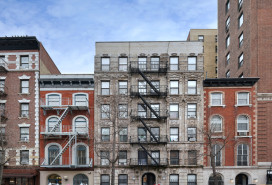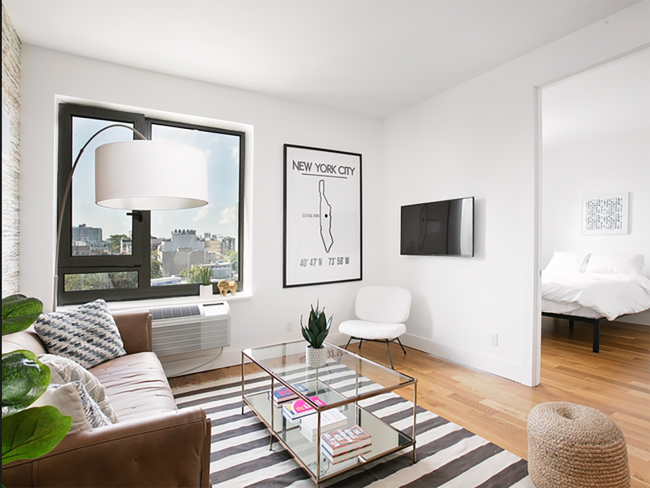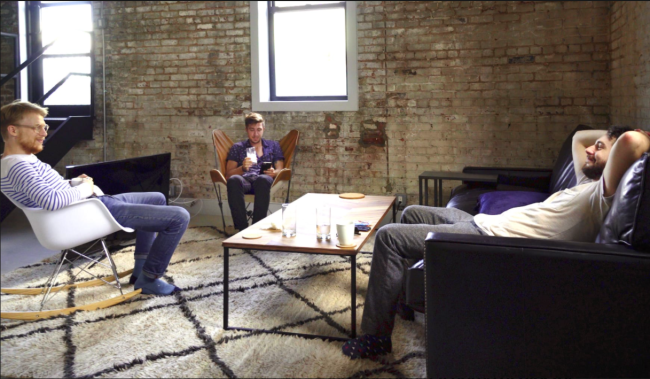How the pandemic has changed the NYC co-living rental experience

Co-living companies are adapting to the pandemic by lowering rents and offering more space for renters to work from home.
Common
Like other areas of New York City’s real estate market, co-living has taken a hit from the pandemic. The mass exodus of young renters and international students from NYC—a result of job losses and the shift to online school—reduced occupancy in co-living buildings early on. And the short-term rental market continues to be decimated by a lack of tourists.
However, if you are a renter looking for a very flexible living situation, it is hard to find something that competes with the co-living model, if you don't mind paying a premium for a turn-key furnished rental. Another way co-living companies take the pain out of renting today: They typically take on the responsibility of helping you find a roommate, something renters are struggling with these days.
If you've rented in a co-living building in the past, you'll find things have changed. The coronavirus has largely taken away the "co" factor—now, community-building and networking events are done online. But more significantly: Rents have dropped by up to 30 percent—and rooms may look different. To accommodate working from home, your bedroom will probably come with a desk.
Co-living CEOs that Brick Underground spoke to say co-living is adapting to the new realities of the market and remains a viable choice for NYC renters.
"Definitely demand has shifted. We are seeing fewer people in general in the housing market," says Or Goldschmidt, founder and CEO of Roomrs. However, he says occupancy is finally improving and the demand for co-living is still there, in spite of the obvious health concerns of sharing living space with roommates—and their social distancing practices—that you don't know very well.
Expense is everything, says Sergii Starostin, CEO of Outpost Club. "People will still go for this living arrangement to save on their rent—they will risk Covid," he says.
Investors are banking on this housing model. Garrett Derderian, founder of the real estate analytics firm, GS Data Services says recent acquisitions and growth in this sector show there's still "heavy investment in the co-living model."
So what can you expect if you are thinking of renting in NYC co-living building during the coronavirus pandemic? Read on.
Co-living rents are down
Just as in traditional rentals, landlords who operate their buildings as co-living entities have to work harder right now to attract tenants.
"The vacancy in our co-living units completely mirrors the vacancy for the traditional multifamily buildings in our portfolio and across the city," says Brad Hargreaves, founder and CEO of Common. Manhattan's vacancy rate topped 5 percent in August according to the latest market data, meaning landlords are being forced to offer deals. Leases with concessions, like a month or two of free rent, are at their highest in a decade.
Some co-living companies say their rents are down between 15 and 25 percent from pre-Covid rates, in order to attract tenants. Goldschmidt says Roomrs doesn’t give traditional concessions like a free month but rents are down by 20 percent "to reflect the decrease in demand.” At Outpost Club rents are down 30 percent.
Starostin says having additional co-living benefits—like housekeeping and all-inclusive utilities—gives co-living the edge right now, especially when offering discounts. Outpost is currently at 92 percent occupancy.
"It's all about what additional services you can bundle together so your property is competitive—co-living is the cherry on the pie," he says.
Your roommate will likely be from NY
The co-living demographic in New York is largely the under 30s and it's young renters who have left the city in droves. Matt Hutchinson, director of roommate matching service SpareRoom, says there’s no guarantee they’ll come back in a hurry, "but if and when they do, value for money is going to be their absolute priority.”
Starostin says in fact the demographic of co-living residents hasn't changed significantly but before Covid you might have roomed with a software engineer from Buenos Aries and an HR coordinator on an extended assignment from London, today the majority of tenants seeking out co-living arrangements are people moving within New York, not from abroad or from other U.S. cities.
Starostin says the motivation for many of them is to "improve their living conditions or find something cheaper."
Roomrs added 30 apartments to their inventory over the summer and Goldschmidt says "people are now trying to get a better location—so the prime locations like Williamsburg and East Village are now performing much better than other locations in the portfolio."
Virtual viewings are here to stay
Before the pandemic, one out of three Common residents signed a lease after a virtual tour, says Hargreaves, so switching to entirely virtual was fairly easy when the pandemic first hit. He says the virtual viewings are here to stay.
"We will never stop offering virtual tours, and we’ll continue to train our staff on how to make them as personal and effective as possible," he says.
There will always be renters who want to physically see an apartment before they commit but Goldschmidt says before the pandemic 30 or 40 percent of applications to Roomrs were done remotely, now it's more like 60 or 70 percent.
Work from home accommodations
As remote work has become the norm, co-living companies are having to adapt to residents wanting to work from home. Starostin says Outpost Club has received "a huge number of requests" from residents for desks in their bedrooms. "Sometimes that has meant making the bed smaller to fit in the desk," he says. Other options have been to close one bedroom and remake it into an office, study, or work space.
Starostin says new apartment layouts that include extra space in bedrooms and additional places to take private calls are going to be in demand for a while. "This will stick—you need to have enough space to work from home," he says.
Although Outpost is not in a position to do major structural work to their apartments, Starostin realized they also needed to support tenants in other ways. "We started to change our internet to commercial grade because I was dealing with the same internet issues as our residents," he says.
Likewise Roomrs made upgrades to the internet to make it stronger and more reliable. Goldschmidt says most of Roomrs' apartments and rooms were already equipped with desks and work from home capabilities prior to the pandemic.
Common is in the process of designing new buildings in NYC and Hargreaves says there are plenty of creative ways the company can make working from home easier. "This will definitely be a focus for our architecture team moving forward," he says.
In the meantime, residents at Common are being asked for feedback about how they’re using the community spaces like lounges and roof decks and the company is looking at formalizing those large areas as remote work spaces and allowing for more private nooks and desks.
Private bathrooms are available
The public health crisis has put a focus on the ratio of bedrooms to bathrooms in a shared apartment. "People are willing to pay more to have their own private bathroom rather than share a bathroom," Starostin says.
As a result, you may have fewer roommates in an apartment based on the number of bathrooms that are available.
Community events have shrunk—or gone online
A major draw for co-living has been its social component but the pandemic has changed that. Starostin says demand for building-wide networking events and socials has fallen but Outpost Club is doing online activities as well as community events that have been scaled back to the individual apartment level.
"Through our house leaders, residents can submit requests for an event and if we think it is beneficial we can fund it. Small gatherings on a unit levels are being funded—small parties or student work outs," he says.
Going forward community might mean something different. Goldschmidt says at Roomrs, communal areas have been shut down but even before the pandemic, the company's focus was less about socials and more about creating "a community of real estate." So membership at Roomrs gives you options to move around the city, testing out neighborhoods, rather than a busy diary of events.
Increased cleanings and sanitizing of public spaces
Like many co-living companies, Common increased the cleanings of shared apartments and community spaces and that will continue.
"Cleaning has been an integral part of keeping our residents safe, and is a priority across all of our buildings," Hargreaves says.
You Might Also Like


























